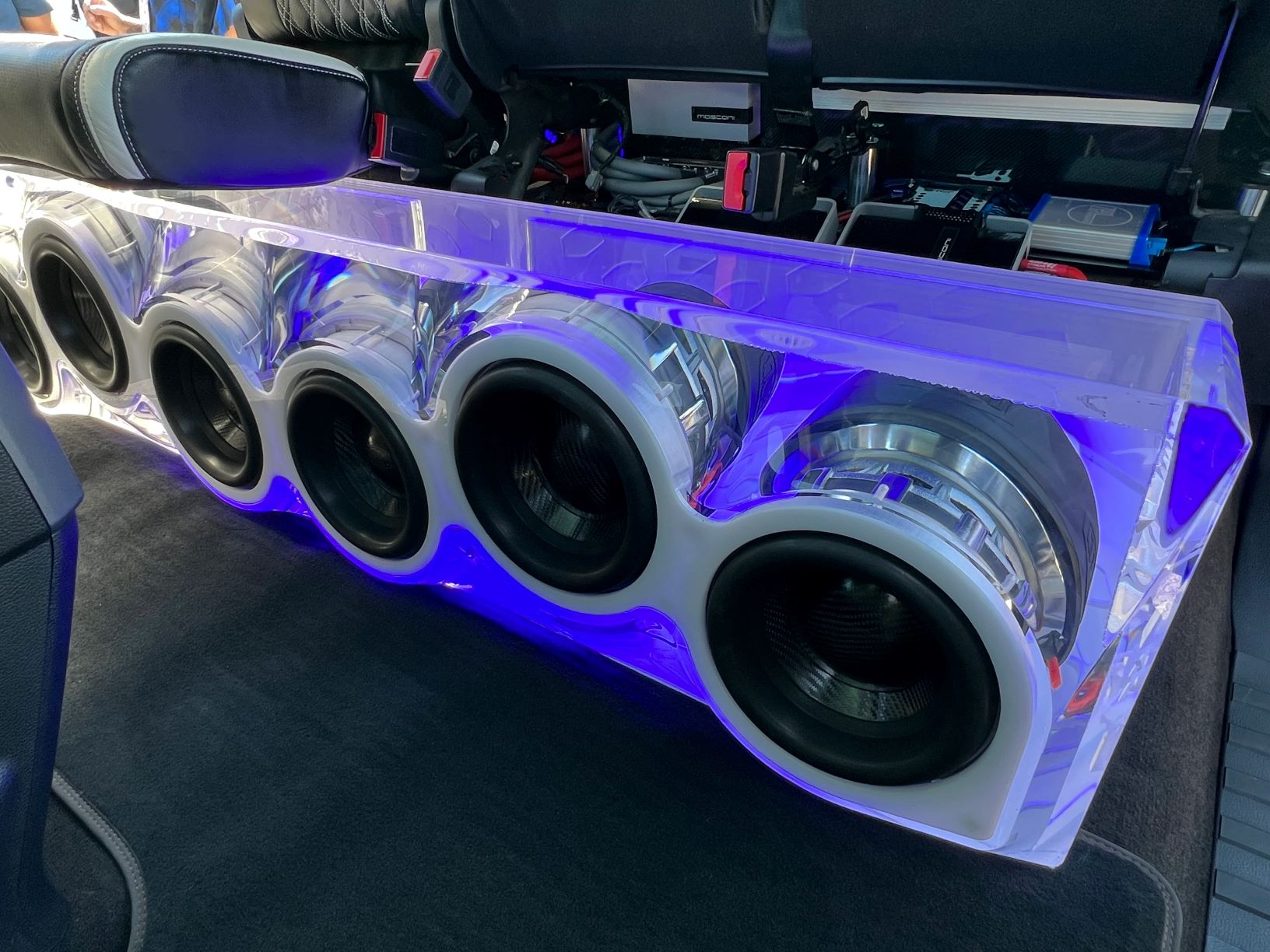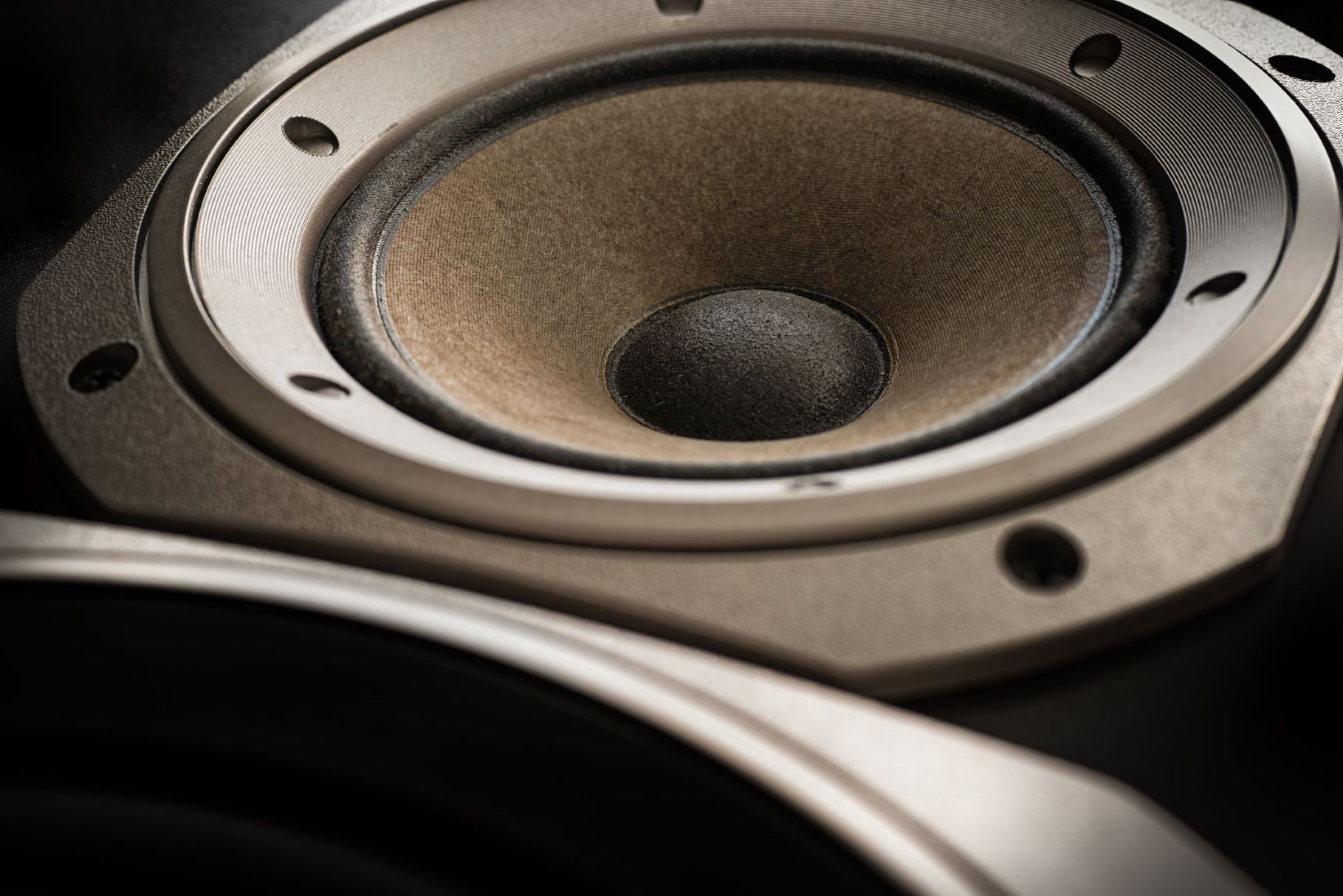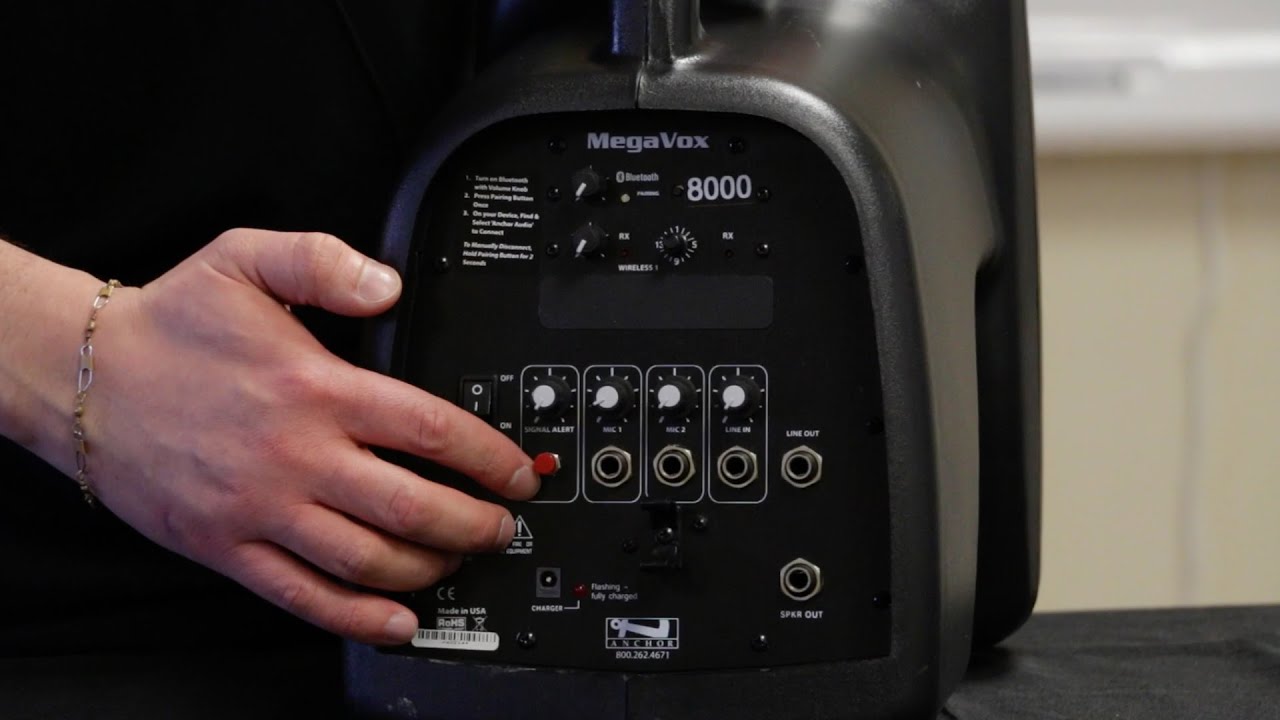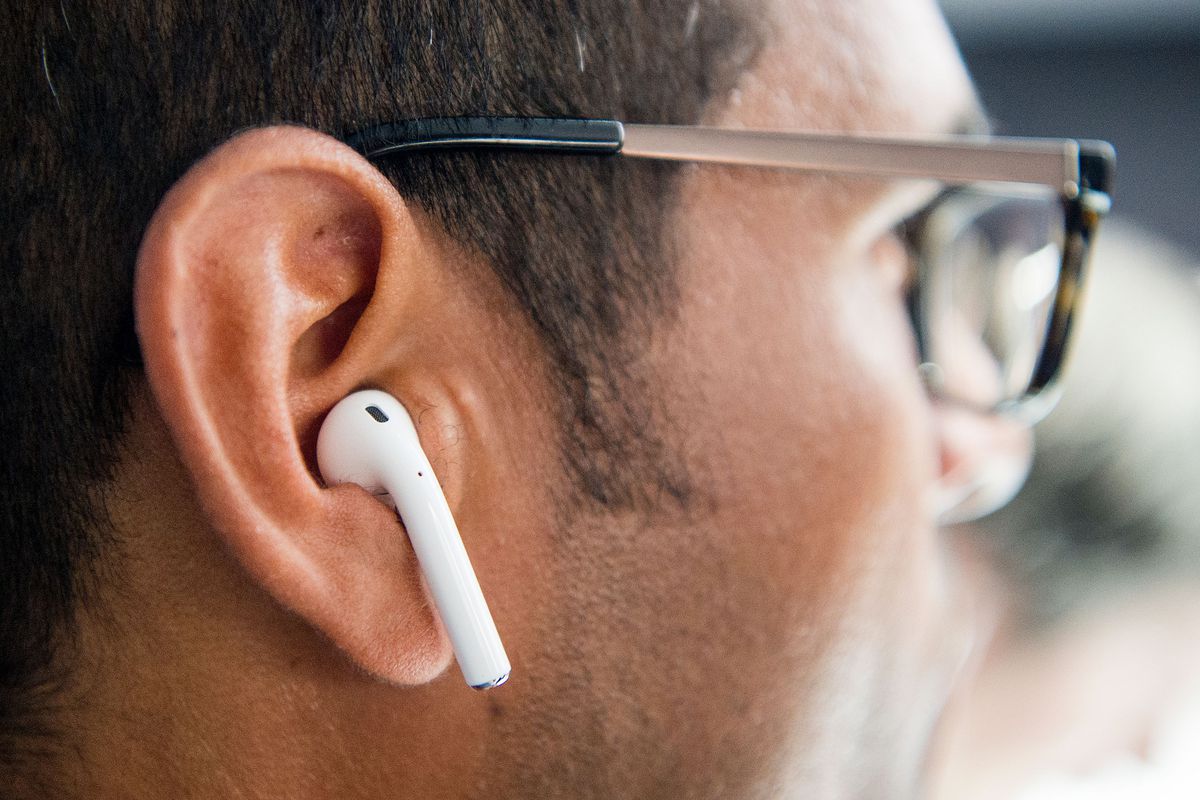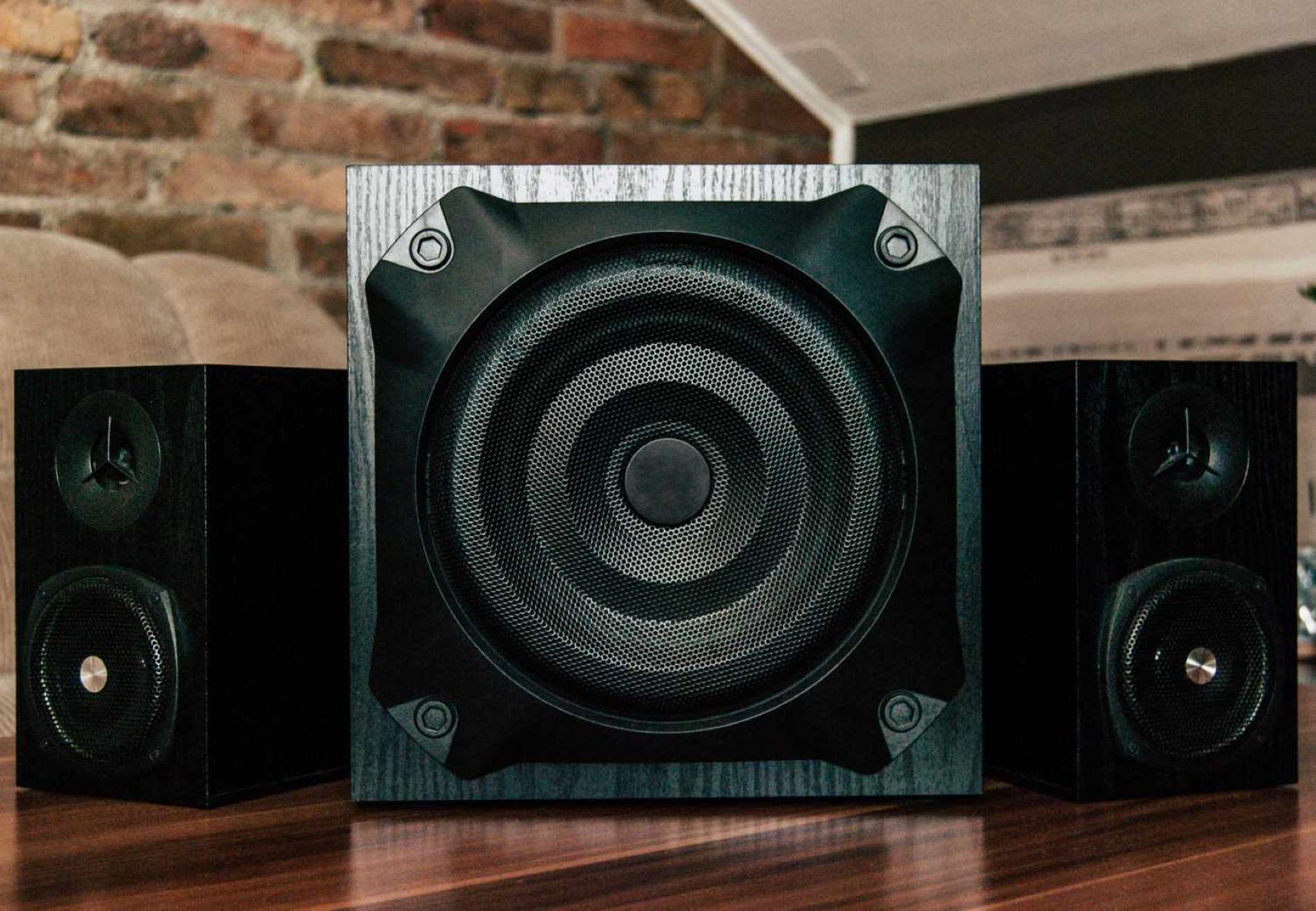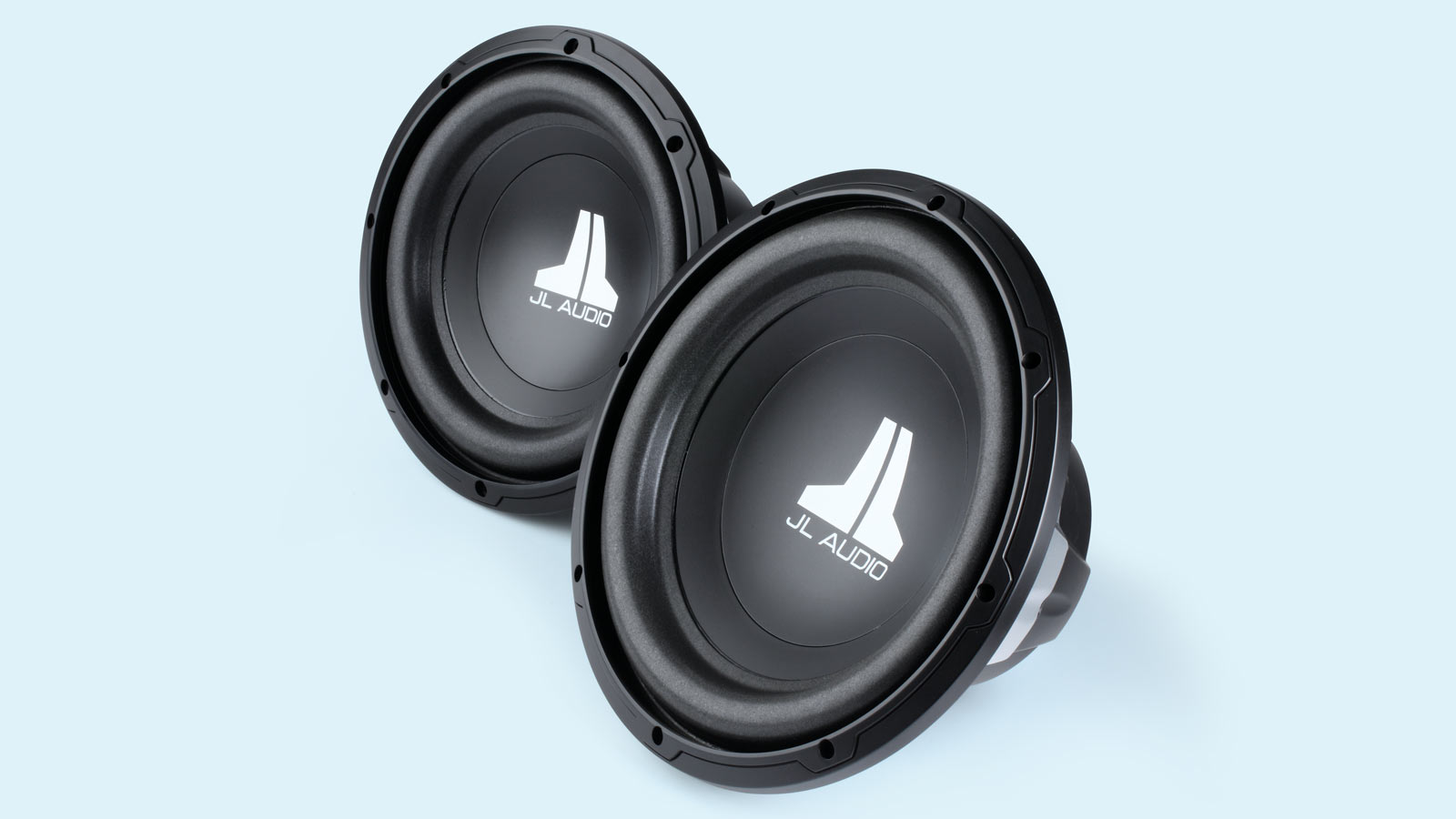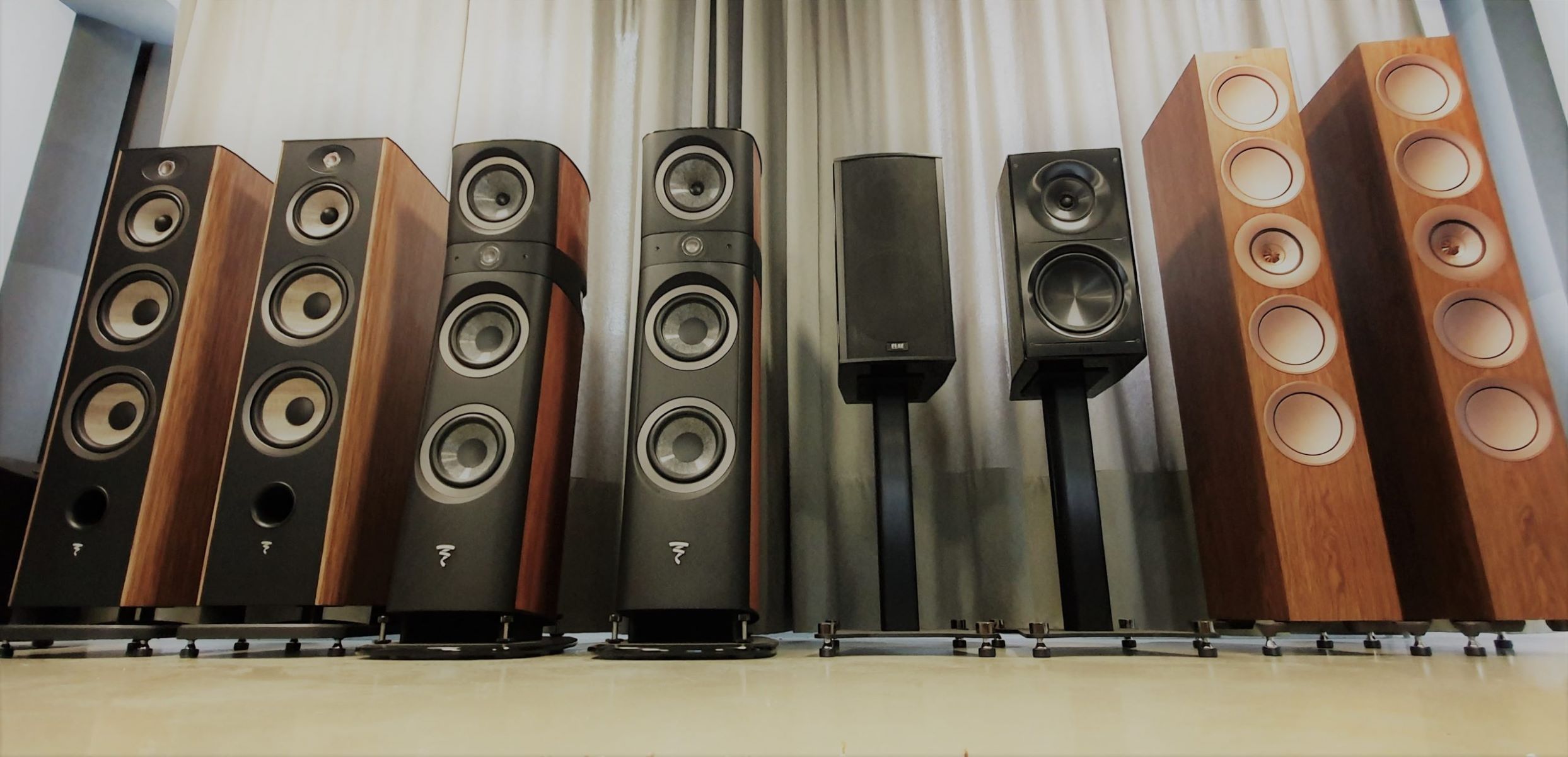Home>Devices & Equipment>Subwoofer>How To Make Subwoofer Wireless


Subwoofer
How To Make Subwoofer Wireless
Published: January 21, 2024
Learn how to make your subwoofer wireless and enjoy the convenience of a clutter-free setup. Enhance your audio experience with the flexibility and freedom of wireless technology.
(Many of the links in this article redirect to a specific reviewed product. Your purchase of these products through affiliate links helps to generate commission for AudioLover.com, at no extra cost. Learn more)
Table of Contents
Introduction
Welcome to the world of immersive audio experiences with wireless subwoofers! If you’re a music enthusiast, a movie buff, or simply someone who appreciates high-quality sound, you’re in for a treat. In this article, we will delve into the realm of wireless subwoofers and explore how they can revolutionize your audio setup.
Subwoofers are an essential component of any audio system, providing deep bass and low-frequency sounds that enrich your audio experience. Traditionally, subwoofers were connected to the main audio system using wires. However, advancements in technology have led to the development of wireless subwoofers, eliminating the need for cumbersome wires and allowing for greater flexibility in placement.
Wireless subwoofers offer numerous benefits, including simplified setup, enhanced versatility, and improved aesthetics. With no wires to worry about, you can position your subwoofer anywhere in the room, optimizing the audio output for the best listening experience. Whether you’re watching a blockbuster movie, listening to your favorite music, or playing immersive video games, a wireless subwoofer can take your audio experience to the next level.
In order to set up a wireless subwoofer system, there are a few necessary equipment and steps to follow. From choosing the right wireless transmitter and receiver to making the necessary connections, we will guide you through the process to ensure a seamless setup. Additionally, we will provide troubleshooting tips for common issues you may encounter along the way, as well as maintenance and care guidelines to keep your wireless subwoofer performing at its best.
So, whether you’re a tech-savvy audiophile or a beginner looking to upgrade your audio setup, this article will be your comprehensive guide to wireless subwoofers. Get ready to immerse yourself in the world of powerful bass and precise low-frequency sound, wirelessly!
Understanding Subwoofers
Before we delve into the world of wireless subwoofers, it’s important to have a basic understanding of what subwoofers are and how they enhance our audio experience. Subwoofers are specialized speakers designed to reproduce low-frequency sound, particularly bass. They are responsible for producing those deep, impactful rumblings that add depth and realism to music, movies, and other audio content.
Subwoofers are typically larger and more powerful than other speakers in an audio setup. Due to their size and construction, they can accurately reproduce low frequencies, while regular speakers struggle to produce the same level of bass response. By adding a subwoofer to your audio system, you can achieve a more balanced and immersive sound experience.
The primary purpose of a subwoofer is to handle the low-frequency range, typically below 100 Hz. This is the range where audio content such as explosions, drum beats, and the deep notes of musical instruments reside. By having a dedicated subwoofer, you can effectively separate these low-frequency sounds from the rest of the audio and ensure that they are reproduced with precision and impact.
Subwoofers come in various shapes and sizes, including standalone units and those integrated into home theater systems. The most commonly used type of subwoofer is the passive subwoofer, which requires an external amplifier to power it. However, advancements in technology have led to the development of active subwoofers, which have built-in amplification and can be directly connected to audio sources.
Understanding the specifications of a subwoofer is key to selecting the right one for your audio setup. Some important specifications to consider include the frequency response range, maximum power output, and impedance. The frequency response range indicates the range of frequencies that the subwoofer can reproduce effectively. The maximum power output defines the subwoofer’s maximum loudness capacity, while impedance refers to the electrical resistance of the subwoofer.
Now that we have a basic understanding of what subwoofers are and their role in audio systems, let’s explore the benefits of upgrading to a wireless subwoofer system in the next section.
Benefits of Wireless Subwoofers
Wireless subwoofers offer a range of benefits that can significantly improve your audio setup. Here are some key advantages of investing in a wireless subwoofer:
- Flexibility in Placement: One of the major advantages of wireless subwoofers is the freedom to place them anywhere in the room. With traditional wired subwoofers, you had to consider cable lengths and positioning near power outlets. With wireless connectivity, you can position your subwoofer in the optimal location for the best bass response, without being constrained by wires.
- Clean and Aesthetically Pleasing Setup: Say goodbye to the clutter of tangled wires and unsightly cable management. Wireless subwoofers eliminate the need for long speaker wires running across the room, providing a clean and visually appealing setup. You can enjoy immersive audio without compromising the aesthetics of your living space.
- Easy Installation and Setup: Setting up a wireless subwoofer is straightforward and hassle-free. You don’t need to worry about running wires through walls or under carpets. Simply connect the wireless transmitter to your audio source and the receiver to the subwoofer, and you’re ready to go. Most wireless subwoofers come with user-friendly controls and intuitive pairing processes.
- Seamless Integration into Existing Audio Systems: Wireless subwoofers are designed to seamlessly integrate with existing audio systems. Whether you have a home theater setup, stereo system, or soundbar, you can easily incorporate a wireless subwoofer to enhance the low-frequency performance. Many wireless subwoofers also offer compatibility with different audio formats and connectivity options.
- Improved Bass Response: Wireless subwoofers are designed to deliver powerful and impactful bass performance. With their dedicated amplification and specialized drivers, they can reproduce low frequencies with precision and clarity. This enhances your audio experience, whether you’re watching movies, listening to music, or playing games.
- Upgradability and Expandability: Wireless subwoofers offer the flexibility to expand your audio setup in the future. If you want to enhance the surround sound experience, you can add additional wireless speakers and create a multi-channel audio system. This makes it easy to customize and upgrade your setup according to your evolving audio needs.
By investing in a wireless subwoofer, you can enjoy the benefits of enhanced audio performance, flexibility in placement, and a clean setup. The next section will guide you through the necessary equipment needed for setting up a wireless subwoofer system.
Necessary Equipment for Wireless Subwoofer Setup
Setting up a wireless subwoofer system requires a few essential pieces of equipment. Before you begin, make sure you have the following items:
- Wireless Subwoofer: The core component of your setup is, of course, the wireless subwoofer itself. Choose a subwoofer that suits your audio needs, taking into consideration factors such as power output, frequency response, and size.
- Wireless Transmitter: A wireless transmitter is required to send the audio signal from your source device to the subwoofer. The transmitter is connected to the audio output of your source device, such as a receiver, soundbar, or amplifier. It wirelessly transmits the audio signal to the subwoofer’s receiver for playback.
- Wireless Receiver: The wireless receiver is built into the subwoofer and receives the audio signal wirelessly from the transmitter. It decodes the signal and sends it to the subwoofer’s built-in amplifier for playback. The wireless receiver and transmitter must be compatible to ensure a seamless connection.
- Cables: Although the setup is wireless, you will still need a few cables to make the necessary connections. This includes power cables for the subwoofer and the transmitter, as well as any audio cables required to connect the transmitter to your audio source. Make sure you have the appropriate cables for your setup, such as RCA, optical, or HDMI cables.
- Power Source: Ensure that you have a nearby power source for both the subwoofer and the wireless transmitter. Most subwoofers and transmitters come with their own power adapters, so make sure you have available power outlets or consider using surge protectors if needed.
- Audio Source: Finally, you will need an audio source device, such as a TV, receiver, or media player, to connect to the wireless transmitter. This is the device that will provide the audio signal for playback through the subwoofer. Depending on your setup, you may also require additional audio equipment, such as a soundbar or amplifier.
Before purchasing the necessary equipment, it’s essential to consider your specific setup and requirements. Check the compatibility of the wireless subwoofer, transmitter, and receiver to ensure they will work seamlessly together. Additionally, consider the range and transmission capabilities of the wireless system to ensure it covers the distance between the transmitter and the subwoofer in your chosen room.
Once you have all the necessary equipment in place, you are ready to start setting up your wireless subwoofer system. The next section will guide you through the step-by-step process of setting up a wireless subwoofer.
Setting Up a Wireless Subwoofer System
Setting up a wireless subwoofer system is a straightforward process. Follow these steps to ensure a successful installation:
- Choose the Placement: Decide on the ideal location for your wireless subwoofer. Consider factors such as the size of the room, proximity to power outlets, and optimal bass response. Place the subwoofer in a position that provides balanced bass distribution throughout the room.
- Connect the Transmitter: Connect the wireless transmitter to your audio source device. Depending on the type of connection, use the appropriate cables such as RCA, optical, or HDMI. Ensure a secure connection and route the cable neatly to avoid any tripping hazards.
- Power On: Plug in the power cables for both the subwoofer and the wireless transmitter. Ensure that both devices are powered on and ready for pairing.
- Pair the Transmitter and Receiver: Most wireless subwoofers have an automatic pairing process. Start by pressing the pairing button on the wireless receiver, usually located on the back of the subwoofer. Then, press the pairing button on the wireless transmitter. The devices will communicate with each other and establish a wireless connection.
- Test the Audio: Once the pairing is complete, play some audio through your source device and verify that the subwoofer is receiving the audio signal. You should now be able to hear the deep bass and low-frequency sounds coming from the subwoofer.
- Adjust the Settings: Fine-tune the audio settings to suit your preference. Most subwoofers have controls for volume, bass level, and crossover frequency. Experiment with these settings to achieve the desired balance and integration with your existing audio system.
- Enjoy Your Wireless Subwoofer: With the setup complete, sit back, relax, and enjoy your enhanced audio experience. Whether you’re watching movies, listening to music, or playing games, the wireless subwoofer will provide powerful and immersive bass to elevate your audio enjoyment.
Keep in mind that specific setup steps may vary depending on the brand and model of your wireless subwoofer system. Always refer to the manufacturer’s instructions for detailed guidance on setting up your particular wireless subwoofer.
If you encounter any issues during the setup process, refer to the troubleshooting section in the next part of this article. It covers common issues and their potential solutions.
Troubleshooting Common Issues with Wireless Subwoofers
While setting up a wireless subwoofer system is relatively straightforward, you may encounter some common issues along the way. Here are a few troubleshooting tips to help you resolve any potential problems:
- No Sound from the Subwoofer: If you’re not hearing any sound from the subwoofer, ensure that the wireless transmitter and receiver are properly paired. Double-check the connection between the audio source and the transmitter. Make sure the volume level on the subwoofer and audio source is appropriately set. Also, ensure that the subwoofer is powered on and that the power indicator light is lit.
- Interference or Signal Dropout: In some cases, wireless signals can be affected by interference or signal dropout. If you experience intermittent audio or performance issues, try relocating the wireless transmitter and receiver to reduce any potential interference. Keep them away from other electronic devices or appliances that may generate interference, such as Wi-Fi routers or cordless phones.
- Poor Bass Response: If you’re not satisfied with the bass performance of the subwoofer, check the settings on both the subwoofer and your audio source. Adjust the volume and bass level controls on the subwoofer to suit your preference. Experiment with the crossover frequency settings to find the optimal balance between the subwoofer and the other speakers in your audio system.
- Dropped Wireless Connection: If the wireless connection between the transmitter and receiver is unstable or drops frequently, verify that there are no physical obstructions blocking the signal path. The distance between the transmitter and receiver should be within the specified range for optimal performance. Additionally, ensure that both the transmitter and receiver have a clear line of sight and are not obstructed by walls or other objects.
- Compatibility Issues: Check the compatibility of the wireless subwoofer system with your audio source. Ensure that the transmitter and receiver operate on the same wireless frequency band. Verify that the audio output of your source device is compatible with the input of the transmitter. If compatibility issues persist, consult the user manual or reach out to the manufacturer for further assistance.
If you have tried these troubleshooting tips and are still experiencing issues, it is recommended to consult the user manual or contact the customer support of your wireless subwoofer’s manufacturer for specific guidance and support.
Now that we’ve covered troubleshooting common issues, let’s move on to the next section, where we will discuss maintenance and care tips to ensure the longevity and performance of your wireless subwoofer.
Maintenance and Care for Wireless Subwoofers
Proper maintenance and care are essential to ensure the longevity and optimal performance of your wireless subwoofer. Here are some maintenance tips to keep in mind:
- Keep the Subwoofer Clean: Regularly dust the surface of the subwoofer using a soft cloth or a microfiber duster. Avoid using harsh cleaning agents or abrasive materials that could damage the finish or grille of the subwoofer. Additionally, ensure that no liquids or foreign objects come into contact with the subwoofer to prevent any potential damage.
- Avoid Overextending the Bass: While it’s tempting to push the bass to the limit, be mindful of overextending the subwoofer’s capabilities. Excessive use of high bass levels can strain the drivers and amplifier, leading to potential damage. It’s important to find a balance between enjoying powerful bass and preserving the longevity of your subwoofer.
- Protect from Power Surges: Power surges can cause irreparable damage to your wireless subwoofer. To protect against power surges, consider using surge protectors or uninterrupted power supply (UPS) devices. These devices can help regulate and stabilize the power supply to your subwoofer, safeguarding it from sudden voltage surges.
- Avoid Blocking Air Vents: Wireless subwoofers have built-in cooling systems to prevent overheating. Ensure that the air vents are not obstructed by objects or placed in confined spaces. Blocking the air vents can limit airflow and cause the subwoofer to overheat, which can impact its performance and lifespan.
- Periodically Check Connections: Every few months, inspect the connections between the subwoofer and the wireless transmitter and receiver. Ensure that the cables are securely connected and that there are no visible signs of wear or damage. Loose connections can lead to audio dropouts or poor performance, so it’s important to periodically check and tighten the connections if necessary.
- Follow Manufacturer Guidelines: Always refer to the manufacturer’s guidelines and instructions for specific maintenance recommendations. Different models and brands may have unique requirements or suggestions for maintaining and caring for your wireless subwoofer.
By following these maintenance tips, you can prolong the life of your wireless subwoofer and ensure consistent performance over time.
Remember, if you encounter any persistent issues or have questions about the maintenance of your specific wireless subwoofer, consult the user manual or reach out to the manufacturer’s customer support for assistance. They can provide further guidance and address any concerns you may have.
In the final section, we will recap the key points discussed throughout this article and emphasize the benefits of integrating a wireless subwoofer into your audio setup.
Conclusion
Congratulations! You have now explored the exciting world of wireless subwoofers and learned about the numerous benefits they offer. We discussed how subwoofers enhance our audio experience by reproducing deep bass and low-frequency sounds, and how wireless subwoofers provide the flexibility and freedom to position them anywhere in the room.
With wireless subwoofers, you can enjoy the convenience of simplified setup, improved aesthetics, and the ability to seamlessly integrate them into your existing audio systems. You experienced how setting up a wireless subwoofer system is a straightforward process, and we provided troubleshooting tips to help resolve any common issues you may encounter along the way.
Remember to take proper care of your wireless subwoofer by keeping it clean, avoiding overextending the bass, and protecting it from power surges. Following these maintenance guidelines will ensure its longevity and optimal performance.
Whether you’re a music lover, a movie enthusiast, or a gamer, a wireless subwoofer can take your audio experience to new heights. The powerful and immersive bass it provides will enhance your enjoyment of music, movies, and games, making you feel like you’re right in the middle of the action.
So, don’t wait any longer! Upgrade your audio setup with a wireless subwoofer and let yourself be immersed in the rich, deep sounds that will bring your entertainment to life. Experience the freedom of wireless connectivity and the pleasure of powerful bass. Get ready to feel the impact and excitement of your favorite audio content like never before!

